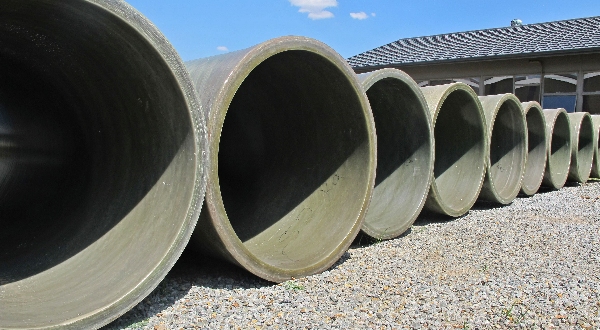 June 2015: Glass-reinforced plastic (GRP) pipes’ proven resilience in harsh terrains, extreme climates and unpredictable site environments make them the superior choice over HDPE, steel and DICL (ductile iron concrete lined) pipes in the demanding environment of a mine dewatering system.
June 2015: Glass-reinforced plastic (GRP) pipes’ proven resilience in harsh terrains, extreme climates and unpredictable site environments make them the superior choice over HDPE, steel and DICL (ductile iron concrete lined) pipes in the demanding environment of a mine dewatering system.
Says Roger Rusch, CEO of IWC “Unchecked groundwater can affect the stability of the mine stopes and affect the depth of excavation. GRP’s resistance to abrasion from harsh chemicals including hyper-saline and acidic groundwater eliminates the need for costly protective pipe coatings and sleeving. These highly flexible pipes also have exceptional creep resistance and resistance to environmental stress cracking, making them suitable for deep-level dewatering operations.”
GRP mine dewatering pipes have proven advantages over HDPE pipes; another pipe material regularly used in open pit mine dewatering operations. GRP pipes can be manufactured at greater diameters (NB500 <) at a lower cost than HDPE. At these larger diameters, GRP pipes are lighter than HDPE, making them easier and safer to handle. GRP’s hoop tensile strength equates to 300 – 375 MPa compared to HDPE’s 60 MPa, while GRP’s hoop tensile modulus is 20000-30000 GPa, in relation to HDPE’s 5000 GPa. In addition, GRP pipes can be optimally designed to meet the internal pressure and stiffness requirements of underground piping applications, unlike HDPE pipes.
When compared to steel and DICL pipes, GRP pipes are hydraulically smoother and require a lower pressure head, which reduces overall energy consumption for pumping. Their high strain allowance results in lower transient wave speeds during water hammer events and eliminates the need for expensive water hammer prevention infrastructure.
“Using GRP pipes in mine dewatering systems help maintain dry conditions, increasing stope stability and ensuring work safety and offer a cost-competitive alternative to HDPE and metallic materials for these large diameter applications,” says Rusch.